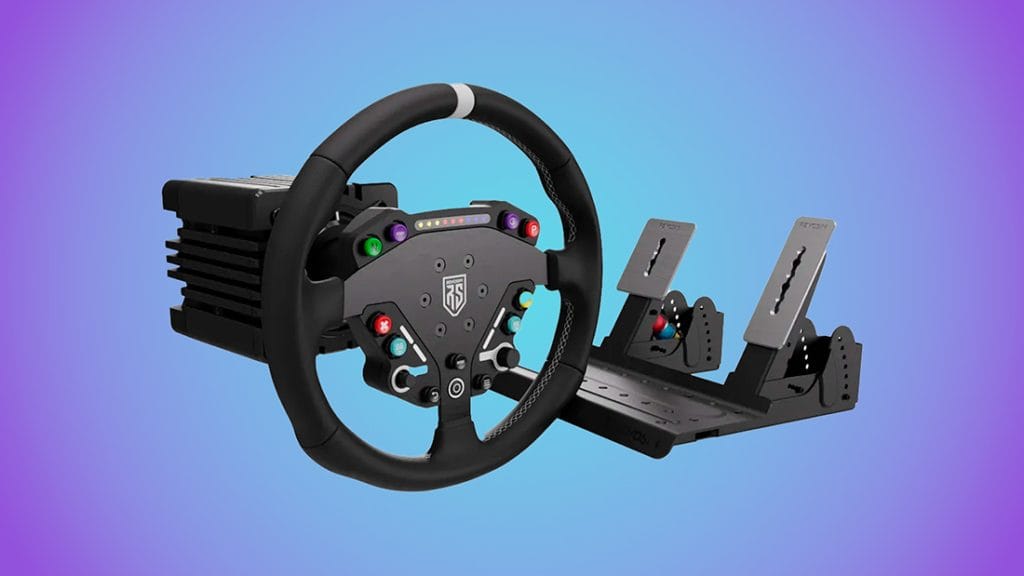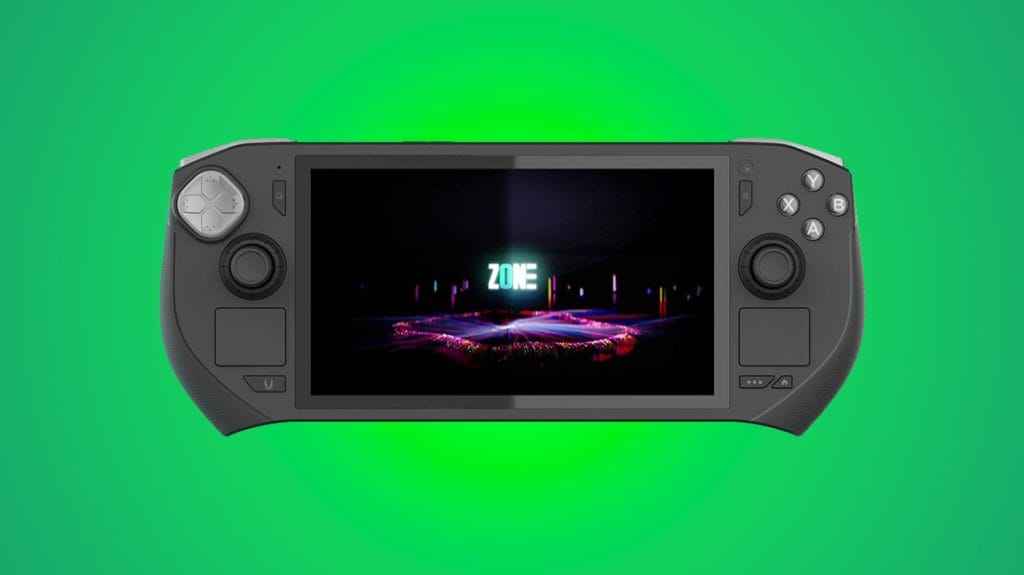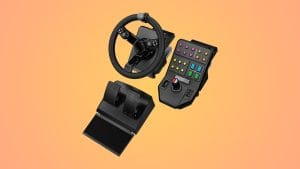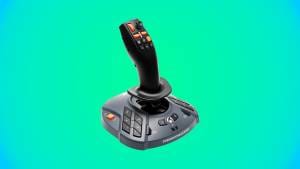ZOTAC Zone Handheld Gaming Console
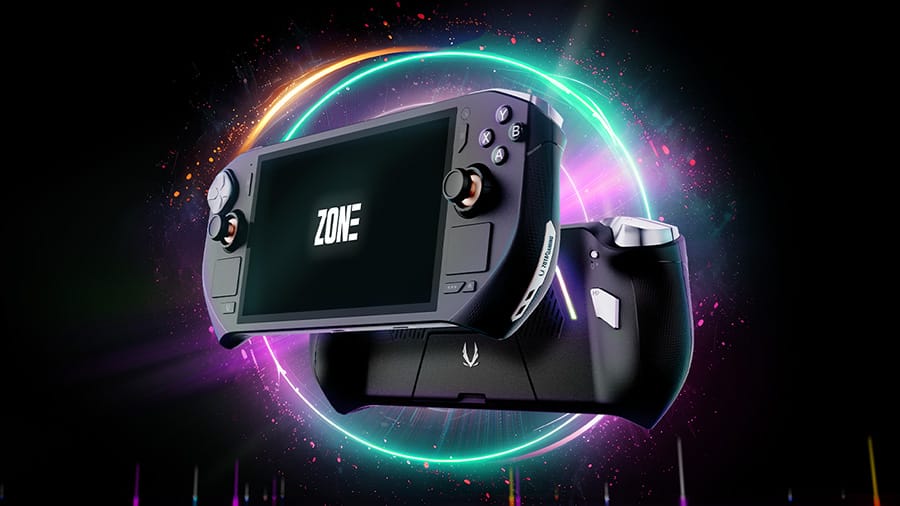
design
The ZOTAC Zone is the first handheld I’ve held in my hands, so admittedly I have little frame of reference to put this thing up against its rivals on a physical front. That said, I imagine most people looking to grab a handheld gaming device at this stage of their lifespan are also going to be picking one up for the first time.
Straight out of the box I was a little surprised at how compact the ZOTAC Zone is compared to what’s on offer. The central 7” screen is bold and imposing, but ZOTAC has done a good job with the chassis and input layout to keep the size down. It means the ZOTAC Zone measures in a little smaller than the Steam Deck but you do lose nearly half an inch of screen size in the process. That’s thanks largely to the chunky 1cm bezel around all four sides which is a little disappointing to see on such a premium device and in an age where bezels seem to be a thing of the past. I can look past it, and realistically a couple of minutes into a gaming session I did stop noticing it, but it’s an immediate drawback and not what you’d expect to find on the more expensive of the pair.

Bezel aside, no space is wasted on the ZOTAC Zone and there’s an impressive range of inputs and curiosities everywhere you look. Symmetrically paired across the front are Hall effect thumbsticks, touch-sensitive trackpads, your standard D-pad and ABXY, and a couple of bonus buttons too. Turning the ZOTAC Zone around you’ll also find shoulder bumpers, Hall effect triggers with locks and a pair of mappable M buttons. The rear also features a kickstand and a token RGB lighting bar, because you can’t call it a gaming device without some LEDs, right?
While there may be plenty of them, it’s a bit of a mixed bag for me in terms of input quality. None of them are bad necessarily, there’s just a constant swing back and forth between premium-feeling and generic. Some buttons are wonderfully clicky and responsive, the D-pad is a standout for this, as are the triggers in their short setting. Rather than simply feeling stopped short, these felt like they actually change to mechanical switches and are super responsive as a result.
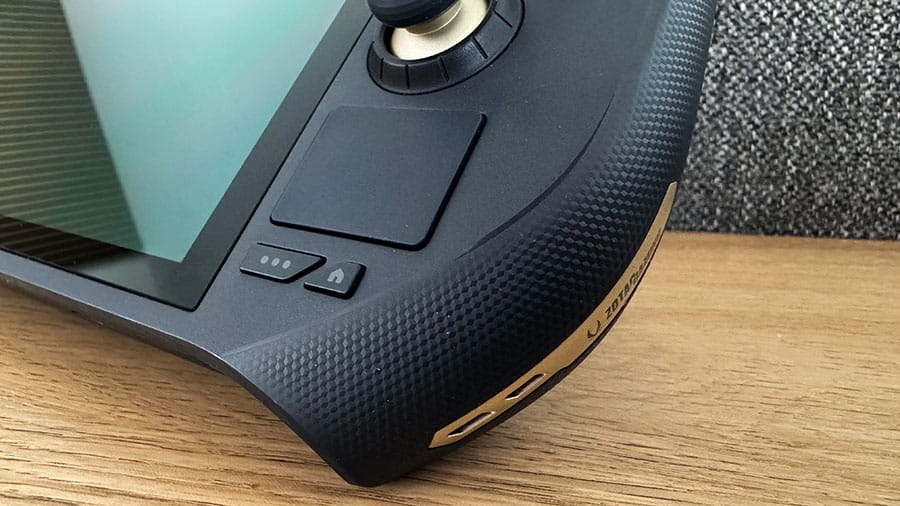
Then there’s the not-so-good bits, the ABXY buttons are a little mushy for my liking however with noticeable wobble and I’d have much preferred those mechanical trigger switches to have carried over. The dual trackpads are handy and nicely placed but feature an awful, harsh click and a hard plastic material that doesn’t feel great or offer much fine control.
Cleverly you’ll find USB-C ports on both the top and bottom edge of the ZOTAC Zone which should make charging pretty hassle-free in theory, my experience wasn’t quite so simple however. I found the ports seemed almost shallow and no matter which USB-C cable I tried they never felt fully inserted or secure. This didn’t cause noticeable connectivity issues, though the ZOTAC Zone was irritatingly picky about which cables and charging bricks it was happy to be juiced up by. It does include a small 65W adapter in the box, though trying any others I found on multiple occasions the ZOTAC Zone would simply refuse to accept it was plugged in or would say it was charging but had its battery level decrease instead.
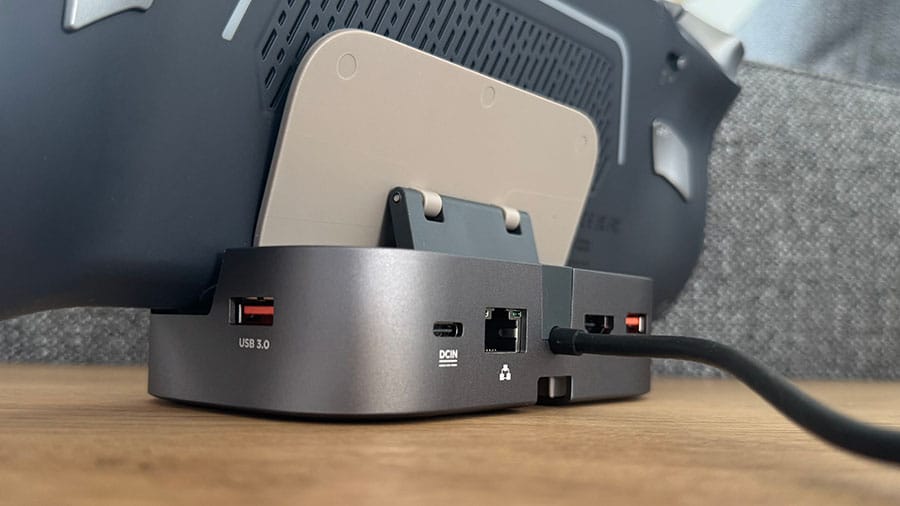
The ZOTAC Zone includes a 512GB M.2 NVMe PCIe 4.0 which while fine on a performance front, is downright mean on storage size. With modern titles often heading towards 100GB each, I found I’d quickly filled the Zone when trying to install a few AAA games for testing. C’mon ZOTAC, this thing’s expensive enough already, surely you could have treated us to a terabyte of storage? You can take matters into your own hands and bump up your capacity via a microSD slot on the bottom, or you can jump for the ZOTAC GAMING Docking Station which features its own M.2 drive slot along with adding HDMI, ethernet and USB 3.2 connectivity options.
performance
Before diving into what the ZOTAC Zone is like to play, I pondered what it’s actually like to hold. I think it’s comfortable but I’m not entirely sure I’m convinced it is. The rear grips of the ZOTAC ZONE do feature some ergonomic sculpting with a little texture baked in too and for my hands, the result is reasonably comfortable but not quite all the way there. My palms feel full with plenty to hold but I’d like more support or a better place to put my fingers. Extending them feels like they’re awkwardly bridging and trying to curl them into a grip sees them quickly run out of room. I appreciate I applauded the compact nature of the ZOTAC Zone earlier and there’s only so much bulk you can add in the name of comfort, but it did mean shuffling my hands around to try and settle in.
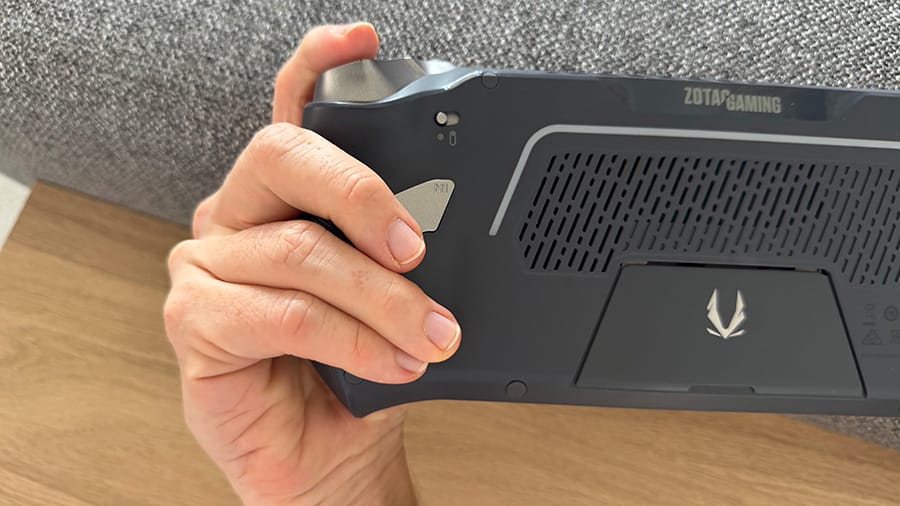
The same is true of the placement of the front thumbsticks. I’m an Xbox gamer primarily so I’m used to an offset stick layout and that made the ZOTAC Zone a bit of an adjustment. My options were to use the bottom of my thumbs on the sticks in order to hold the grips properly and reach the Y button, or slide my hands down to use the thumbsticks properly and have to reach for the Y button when needed. The truth is I probably fell somewhere in the middle, and while I did get used to it over time, I didn’t feel as locked in as I do when holding an Xbox Series X controller.
Enough about holding this handheld though, what’s the ZOTAC Zone like to game with? Really pretty great.
Powered by an AMD duo of a Ryzen 7 8840U processor and Radeon 780M graphics, there’s plenty of raw potential here, though 16GB of DDR5 memory feels a little light on. While this does match the Steam Deck so isn’t necessarily a negative, pushing this to 32GB would have given the ZOTAC Zone more headroom to stand out as a punchier, higher-end option with less compromise. The star of the show is undisputedly the ZOTAC Zone’s 7” AMOLED screen which is gorgeously rich with colour, brightness and detail. The 120Hz refresh rate is fixed but buttery smooth in the right games and a real pleasure to look at.
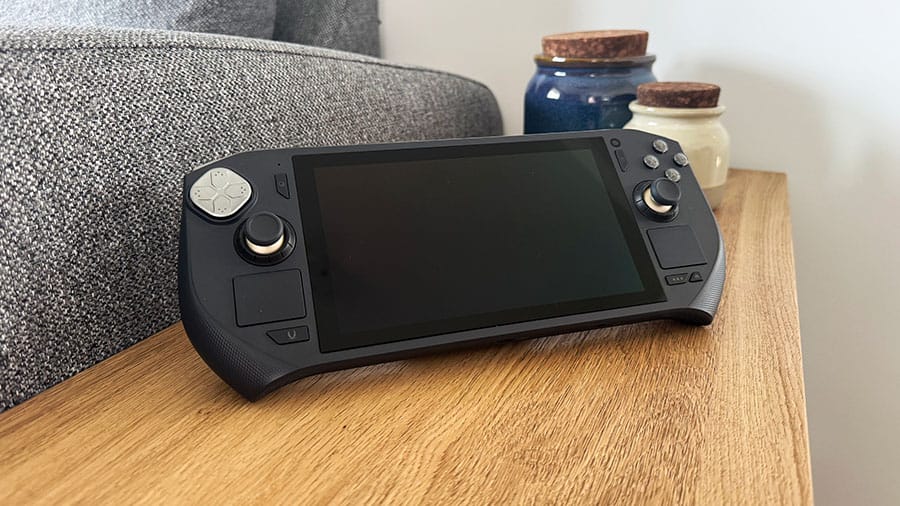
On a long haul flight I jumped into Forza Horizon 5 and had a wonderful time driving around Mexico in mid-air thanks to the ZOTAC Zone. The Hall effect triggers offered real precision when it came to throttle and brake control while the thumbsticks had enough resistance to allow for controlled, measured cornering. Everything looked great too and I was surprised to find Forza Horizon 5 had opted to bump down most of the graphic settings by default and what I had been impressed with through the first few races was actually largely set to low across the board. I wasn’t able to bump these settings up too high before encountering a noticeable drop in frames, but given the pixel density of a FHD resolution on a 7” screen this is hardly necessary anyway.
I had two main concerns though, one that affected me and one that I was worried affected those around me.
Battery life is poor and there’s no other way for me to describe it. Letting the ZOTAC Zone maximise the full 30W power of the processor saw the battery percentage drain before my eyes and I ended up with little more than an hour of playtime from full to empty. Capping the power with ZOTAC’s pre-installed software did improve things, at the obvious expense of a little performance, but even limiting this to a modest 15W saw the battery life struggle to climb much beyond two hours. For a train into work that’s probably not too bad but in reality it means needing to carry a suitably large and high-speed powerbank around with you, or sticking near to a power socket at all times.
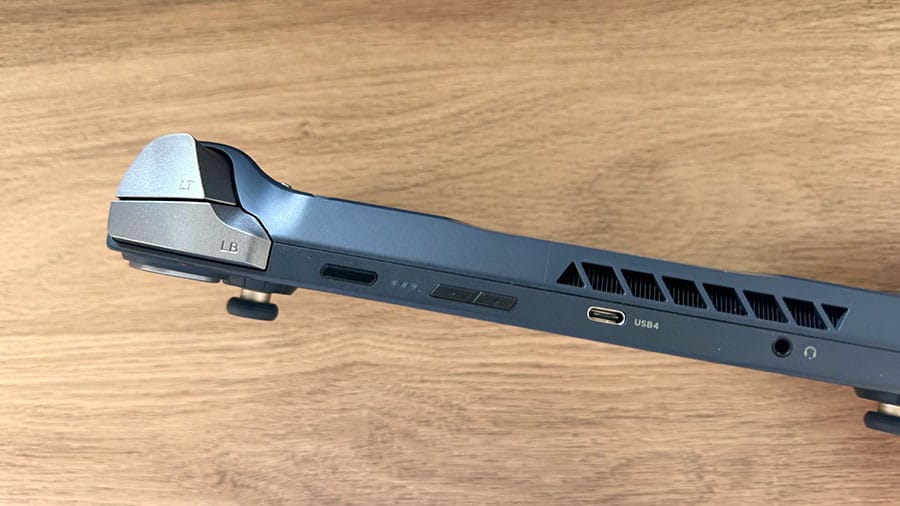
Then there’s the fan noise, blimey the fan noise. The ZOTAC Zone seemed to want to directly compete with the engines of the Airbus A380 I was flying on while playing Indiana Jones and the Great Circle. I get it, thermals can be hard to control, particularly in a compact device like this, but pumping out at near 100% at all times I became self conscious of the noise and impact on those around me. Again, at home on the couch this is less of a concern, but for a portable device the ZOTAC Zone is certainly keen to draw attention to itself. The upside I suppose is that generally those jet engine fans did their job well, I never noticed the Zone’s body becoming alarmingly warm, even when it was resting on my legs.
The ZOTAC Zone’s speakers are lacking and you’re likely going to want to use a set of headphones to really experience games properly. They come across like mobile phone speakers from a few years ago, hollow and lacking any detail or oomph – good enough to deal with for a quick session but not really up to scratch. Outside of gaming the user experience of the ZOTAC Zone is a little clunky because it runs Windows 11, which is, well, Windows 11. It means a range of annoying little quirks that I won’t blame ZOTAC for directly but you should be ready to deal with. ZOTAC’s own launcher software is fine but is no replacement for a proper operating system and needing to navigate the standard Windows 11 UI with touch controls that lack precision and detail was frustrating.
summed up
In terms of raw gaming potential, the ZOTAC Zone is really rather impressive. From one game to the next, whether installed locally or playing over the cloud, I had a blast. The screen is stunning with punchy colour and smooth framerates, and the AMD-based internals were able to keep up pretty much throughout. You’ll pay for this performance though, pushing double that of the Steam Deck OLED and while this is generally reflective of the experience, it can still be tricky to justify.
That’s in part thanks to very disappointing battery life and a slightly underwhelming, finicky user experience trying to navigate Windows 11 with touch and gamepad controls. If you’re looking to the ZOTAC Zone as a couch gamer while the TV is occupied, or as a daily commute companion where an hour of gameplay is all you need – it’s got you handsomely covered. If you need long-lasting performance on the go, or are looking for a value option – you’re probably better looking elsewhere.

